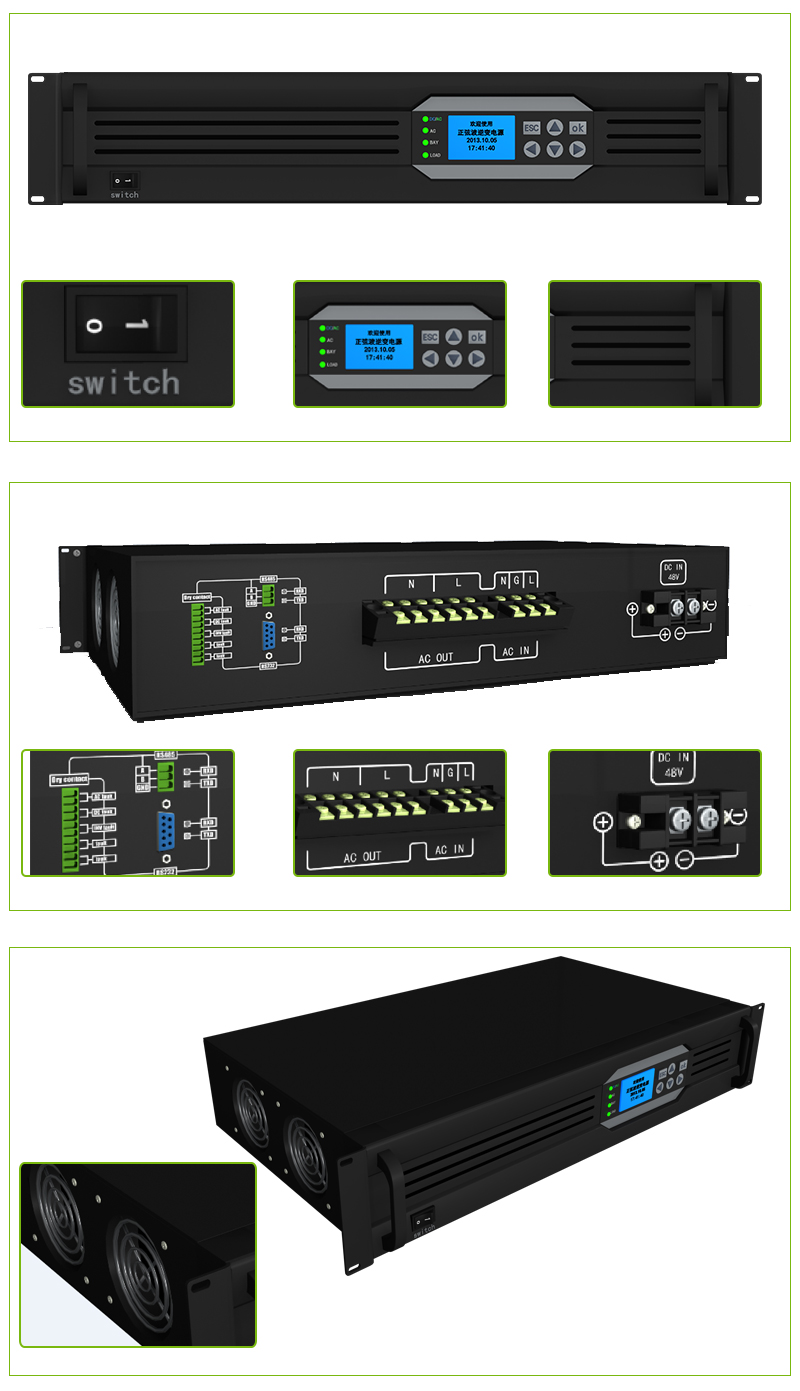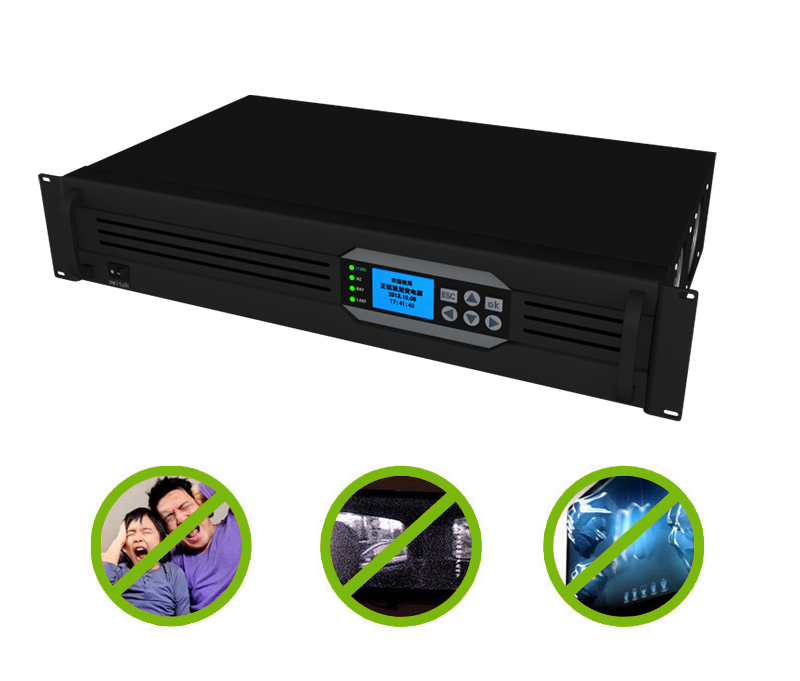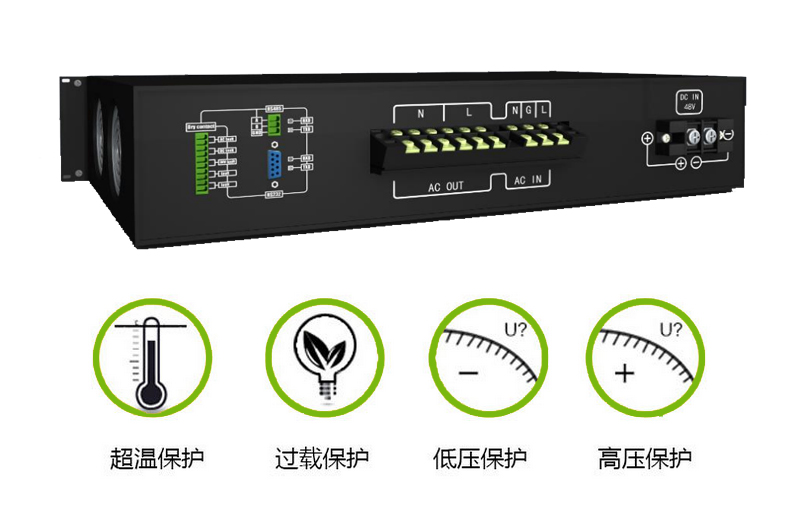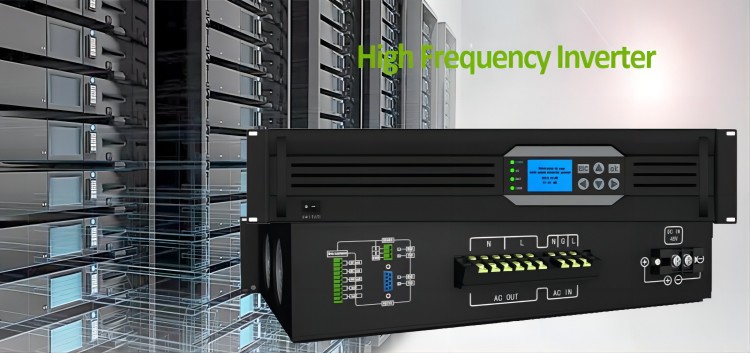News
Optimizing Telecom Infrastructure: Inverters, Power Systems, and Renewable Integration
Click: 764 Date: 02/05/2024 4::44::01 PM
Optimizing Telecom Infrastructure: Inverters, Power Systems, and Renewable Integration

Inverters play a crucial role in telecom power systems by transforming direct current (DC) power into alternating current (AC) power. This conversion is vital because most telecom equipment operates on AC power. Inverters are fundamental components of modern electrical systems, including those found in telecommunications, where they ensure that the power supply remains stable and reliable.
Different types of inverters exist, each designed for specific applications. For instance, grid tie inverters are commonly used in solar power systems to feed excess power back to the grid. Similarly, uninterruptible power supplies (UPS) with built-in inverters provide emergency power to critical telecom equipment during power outages. These inverters are essential for maintaining continuous communication services during unexpected power disruptions.
Moreover, microinverters are increasingly being adopted in telecom applications due to their compact size and efficiency. They allow for the integration of renewable energy sources like solar panels directly into telecom infrastructure, offering sustainable power solutions. This approach reduces reliance on traditional power grids and contributes to environmental conservation.
In summary, understanding the role of inverters in telecom power systems is paramount for ensuring the reliability, efficiency, and sustainability of telecommunications infrastructure.

Inverter technologies have a profound impact on sustainable power solutions, transforming the way we harness and distribute energy. Here are some insights into how inverters contribute to sustainability:
Cost-Effectiveness: Inverters provide a financially viable alternative to traditional power generation methods, particularly as the costs of renewables like solar panels continue to decline.
Reliability: Advanced monitoring and safety features inherent in inverters ensure a consistent and secure energy supply, which is essential for the stability of the power system.
Clean Energy Production: Inverters facilitate the conversion of renewable energy sources, thereby reducing reliance on fossil fuels and minimizing harmful emissions.
Scalability: The scalability of inverters allows for expansion of energy capacity as demand grows, making them suitable for both residential and commercial sectors.
Grid Integration: Inverters can be seamlessly incorporated into the existing power grid, facilitating a gradual shift towards a more sustainable energy infrastructure.
Moreover, inverters play a crucial role in the evolution of the power system, improving efficiency and enabling decentralization. They are instrumental in integrating renewable energy sources, reducing the need for large power plants, and lowering the environmental footprint of energy production. Additionally, inverters empower individuals and businesses by offering greater control over energy generation and usage, fostering a more democratic energy landscape.
Technological advancements are further enhancing the capabilities of inverters, leading to increased efficiency and cost reduction. Integration of digital technology into inverters, such as advanced monitoring systems and smart grid capabilities, is a significant trend shaping the future of inverters. These developments not only optimize energy generation and consumption but also ensure a stable and reliable supply of electricity.
In summary, inverter technologies are a cornerstone of sustainable power solutions, offering a multifaceted approach to energy production, distribution, and management. As the world moves towards greener energy practices, the importance of inverter technologies in achieving a cleaner and more efficient power system will only continue to grow.
Integrating Renewable Energy: The Use of Solar Inverters in Telecom involves leveraging solar technology to provide power to telecommunication facilities. Here are some key points to consider:
Solar Energy and Telecom: The adoption of solar inverters in telecom infrastructure is part of a broader trend towards renewable energy sources, aiming to reduce carbon emissions and increase energy independence.
Benefits of Solar Inverters: Utilizing solar inverters offers several advantages, including sustainability, energy independence, cost savings, and improved reliability. They enable telecom installations to become self-sufficient in power and reduce their dependency on external power providers.
Government Incentives: Governments are encouraging the adoption of renewable energy in telecom through incentives like tax benefits and subsidies, which can further boost the cost efficiency of solar inverters.
Reputation Enhancement: Adopting solar inverters can improve a company's public image, positioning them as environmentally responsible and forward-thinking.
Reduced Carbon Footprint: Telecom facilities powered by solar energy emit significantly fewer greenhouse gases compared to those using traditional generators, contributing to climate change mitigation efforts.
By integrating solar inverters into telecom power systems, operators can achieve a cleaner, more sustainable operation that also potentially leads to economic benefits.

Uninterruptible Power Supplies (UPS) play a crucial role in telecommunications by ensuring continuous power availability and minimizing downtime. Here's a rephrased discussion on the importance of UPS in telecommunications:
UPS systems are essential components of telecommunication infrastructure, serving as the backbone of reliable power delivery. They are designed to provide instantaneous, fail-safe power to critical systems in the event of a power outage, thus preventing service interruptions and ensuring business continuity.
Telecommunication networks must remain operational without exception, particularly considering the reliance of sectors like healthcare and defense. To achieve this, it is vital to understand the potential threats to power supply and implement effective mitigation strategies. These strategies may involve robust internal security measures, advanced sensor technology, battery backups, and having spare parts readily available.
Emergency power solutions like generators and UPS systems are designed to operate under extreme conditions, delivering consistent performance regardless of weather events or human errors. Specialized UPS products, such as those offered by Dale Power Solutions, are equipped to withstand such challenges, providing a reliable power source that maintains the integrity of telecommunication services.
For UPS systems to function optimally, they should be adequately loaded to reach their full efficiency. Most UPS manufacturers recommend that the UPS should be at least 30% loaded to avoid compatibility issues and ensure proper operation. Additionally, the use of a network management card can facilitate monitoring functions, allowing for timely notifications to customers regarding UPS status.
In the case of large UPS systems, such as those built up from smaller units (e.g., 250kW), the UPS will respond to a failure by removing the failed unit from the load while the remaining power cabinets continue to carry the load. This modular approach ensures that the entire system remains functional and continues to provide power.
Maintenance procedures, such as static bypass for emergency operations and maintenance bypass for planned events, are integral to keeping UPS systems in peak condition. It is also recommended to keep UPS systems in a controlled environment to preserve the longevity of the batteries.
In summary, UPS systems are indispensable in telecommunications for their ability to maintain power supply continuity, support emergency operations, and ensure the smooth functioning of critical telecom services.
Microinverters play a crucial role in ensuring reliable communications by providing stable and efficient power conversion. They are particularly important in grid support and frequency control, which are critical for maintaining grid stability and preventing voltage fluctuations that could lead to communication interruptions.
Control strategies for microinverters can vary widely, depending on whether they are operating in grid-connected mode, islanding mode (off-grid), or even with reactive power compensation. When microinverters are part of a hybrid system, they can be controlled to limit their output and achieve zero export to the grid when necessary. This is achieved by using a relay or other switching mechanisms that allow the microinverters to be turned on and off as required.
In situations where the load is smaller than the production capacity of the microinverters, especially when they are on the grid, the hybrid inverter may try to absorb the excess production by driving the AC charger to store excess AC-coupled production. However, this approach becomes less effective as the battery approaches full charge, leading to increased export to the grid.
Hybrid inverters have the ability to control frequency shift and microinverter output when off the grid to match production to load. However, when on the grid, if the load is smaller than the AC-coupled microinverter production, the hybrid inverter's ability to control the output is limited.
Despite these complexities, there are methods available to manage microinverters effectively. For instance, the Envoy S Meter can control Enphase Microinverters, offering users the ability to regulate their performance and maintain optimal grid support. Furthermore, some hybrid or All-In-One (AIO) systems can throttle microinverter output when not off the grid, helping to balance production with demand.
In summary, microinverters are essential components in telecom power systems, providing key support for grid operations and frequency control. Their integration into hybrid systems allows for advanced control strategies, including frequency shifting and output throttling, which are vital for achieving reliable communications and maintaining grid stability.
